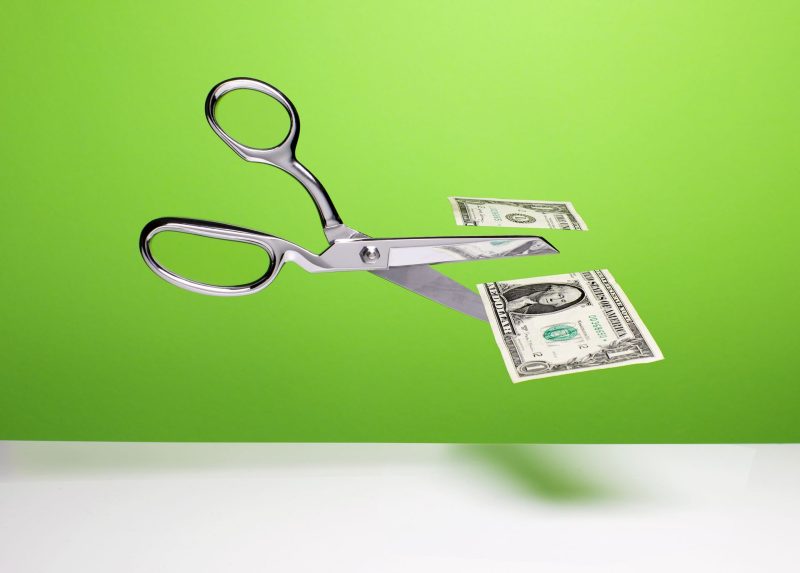What Is a High-Yield Savings Account?

A high-yield savings account is essentially the same as a traditional savings account with one key difference — high-yield savings accounts pay a higher-than-average APY on deposits. An APY, or annual percentage yield, is the amount of interest earned on an account in one year. The APY for high-yield savings accounts can be anywhere from 3% to over 5% — much higher than that of a traditional account.
And even though savings rates will fall as the Fed starts cutting interest rates, rates on high-yield accounts will still remain far higher than rates on normal checking or savings accounts. Because of this, you’ll be able to accrue more cash over time by opting for a high-yield savings account. According to Bankrate, the national average savings account yield is just 0.61%, while some of the best high-yield savings accounts offer rates of over 5%.
Here’s what you need to know about opening a high-yield savings account. Also, use our tool, in partnership with Bankrate, to compare savings rates today.
When should you use a high-yield savings account?
If you’re not using a high-yield savings account, you’re leaving money on the table. Because high-yield savings accounts offer higher rates than traditional savings accounts, your cash will accrue more interest by simply sitting in a high-yield account, with no effort on your part. And there’s no risk, either.
High-yield savings accounts are great options for emergency funds and short-term savings goals. Unlike CD accounts, which have penalties if money is withdrawn before a certain time frame (typically a year or more), money in your savings account is more liquid. You can usually access and withdraw funds from your high-yield account up to six times a month without incurring penalties. Therefore, these accounts are good options for saving any cash you need accessible.
Pros of high-yield accounts
Higher APYs: Since high-yield savings accounts have higher APYs than traditional savings accounts, you’ll accrue more interest over time. Plus, interest in these accounts is compounded daily.
Safety: Many high-yield accounts are FDIC or NCUA insured, meaning that if something were to happen to the bank your account is with, your money will still be safe.
Accessibility: While there are limitations to the number of free withdrawals you can make from a savings account, your money is still readily accessible whenever needed.
Cons of high-yield accounts
Harder to access than traditional savings accounts: If you have a savings account that’s with a different bank than your checking account, you may have to wait a few days for funds to transfer from one to the other. Plus, you won’t be able to easily view account details for both accounts in one place.
Not suited for long-term goals: If you’re looking to save for long-term goals, like retirement, other investments, like stocks, are usually a better choice for your money. The rate of inflation can be higher than what you accrue in interest.
Variable interest rates: Since interest rates are variable, the APY on the account can decrease from the rate it was when you opened the account.
Online banks: Since most high-yield accounts are offered by online banks, you likely won’t have branch access so contacting customer service can be more challenging.
How much can I earn in a high-yield account?
Many high-yield savings accounts can earn a high APY on balances, but what does this actually look like?
Let’s say you put $10,000 into an account with a 3% APY. After a year, your balance would accrue $300. If you’re looking to save for an upcoming purchase, or just want to maximize your savings as best as possible, it’s a very simple way to do just that.
How to open a high-yield savings account
So, how do you open a savings account? You’ll open a high-yield savings account in the same way you’d open a traditional one, except you may have to forgo your brick-and-mortar bank for an online bank or credit union, as these are where high-yield accounts are typically offered.
First, you’ll need to opt for an account that works best for you. To do so, you’ll need to take into account not only the APY of the account but also the associated fees. Some accounts have minimum deposit limits or balance requirements, which can charge fees that can potentially take a chunk out of your accrued savings if these requirements are not met.
After taking this into consideration and choosing an account, you’ll then be required to submit an application, providing personal information such as your Social Security number, home address and driver’s license number. Once your account is open and money has been deposited, it functions the same as a typical savings account — and you can add or withdraw funds as you please.
Bottom line
If you’re looking for an easy way to maximize your savings — try transferring your cash to a high-yield savings account. You’ll have a higher rate of return than that of a traditional savings account, earning you more in the long run.



